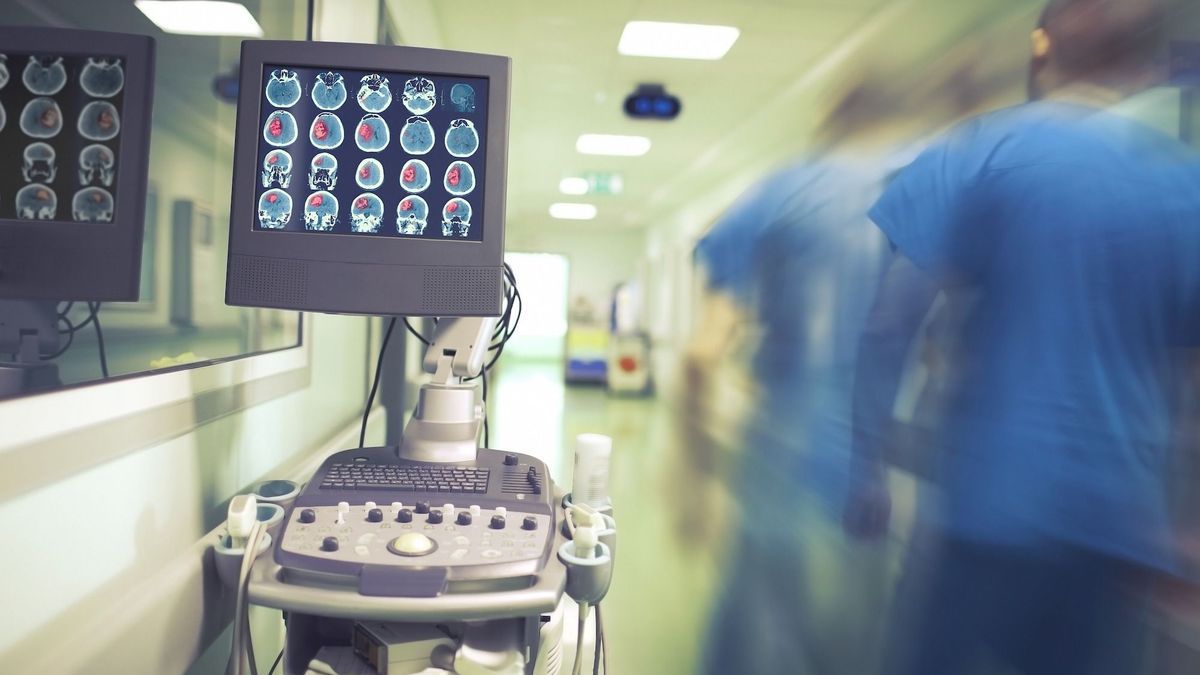
Thrombolysis is the standard treatment for ischemic stroke. It must be administered within 4 1/2 hours after the onset of symptoms.
There are two types of stroke: ischemic stroke and hemorrhagic stroke. Ischemic stroke, or cerebral infarction, is caused by occlusion of a cerebral artery by a blood clot, causing a sudden cessation of blood circulation in the brain. This results in the death of brain cells in the area of the brain where the stroke occurred. A emergency care is essential to dissolve the clot and limit the risk of after-effects.
Thrombolysis, standard treatment for ischemic stroke
Thrombolysis is the standard treatment for ischemic stroke. It consists of injecting a medicine intravenously to dissolve the clot causing the blockage in the cerebral artery. Thrombolysis must be carried out within 4 1/2 hours after the onset of the first symptoms. A mechanical thrombectomy (removal of the clot by endovascular route) is sometimes associated, particularly in the event of occlusion of a large vessel. This intervention can be carried out up to 24 hours after the start of symptoms.
How does a thrombolytic work and what medication is used?
The second-generation thrombolytic works by breaking up the blood clot that is blocking the artery. This fast-acting molecule is capable of reproducing fibrinolysis, the natural process of dissolving blood clots. Under the effect of thrombolysis, the residues will then be eliminated by the blood.
Several medications are available:
- Actilyse® (altéplase)
- Métalyse® (tenecteplase)
Indications: when to do thrombolysis?
Intravenous thrombolysis is indicated in cases of ischemic stroke.
What is the time limit for administering intravenous cerebral thrombolysis?
Thrombolysis can only be administered within 4 1/2 hours following the cerebral infarction. It is therefore important to determine the time of the stroke, although it can be difficult. “Brain MRI is the test of choice to date the stroke and know if we are within the therapeutic window. Indeed, there are anomalies on certain MRI sequences which only appear after 4.5 hours so if they are not visible, this confirms that the infarction is recent. In certain cases, thanks to this brain MRI with different sequences, we are able to extend this therapeutic window up to 9 hours because the images will meet certain criteria allowing us to say that there is still tissue to be saved”, explains Dr Michael Obadia, head of the neurovascular department at the Adolphe de Rothschild Foundation hospital.
How does thrombolysis take place? What is the difference from a thrombectomy?
- The patient arrives at the emergency room. The medical team was informed of his arrival in advance. Examinations are carried out a few minutes after arrival: a brain MRI, an electrocardiogram and a blood test;
- Thrombolysis is injected into a vein to dissolve the clot in the blocked artery. This process takes approximately 1 hour;
- A mechanical thrombectomy can be associated immediately if a large vessel is occluded;
- The patient is hospitalized in the intensive care unit for 24 to 48 hours. His pulse, blood pressure and neurological status are monitored continuously.
Mechanical thrombectomy is carried out under fluoroscopic control. A catheter is inserted into the femoral artery and then up to the blocked artery in the brain. The clot adheres to the nickel-titanium mesh at the end of the catheter and is thus removed.
Contraindications
Thrombolysis is contraindicated in the following cases:
- If the first symptoms appeared more than 4 1/2 hours ago;
- If the patient is taking anti-coagulant treatment, particularly prescribed in cases of cardiac pathology;
- If the patient has too high blood pressure;
- In the event of recent surgical intervention, taking into account the risk of bleeding.
Risks and side effects of this protocol
“The dissolution of a blood clot causes a major risk of hemorrhage of around 5-6%. If this complication of treatment occurs, it will worsen the condition of the patient who will have an additional risk of being more disabled and dying. However, the benefit-risk ratio goes to benefit if thrombolysis is carried out within the criteria mentioned”, indicates Dr Michel Obadia. In some cases, an allergy to the drug may occur.
Expected results of the operation
The speed of the intervention has a direct impact on the patient’s recovery. “Easy and quick to set up, performing thrombolysis improves neurological prognosis by 30%, reduces mortality, and prevents 1 in 7 hemiplegia. In other words, the patient is less disabled afterwards or has minimal after-effects.”informs the specialist.
